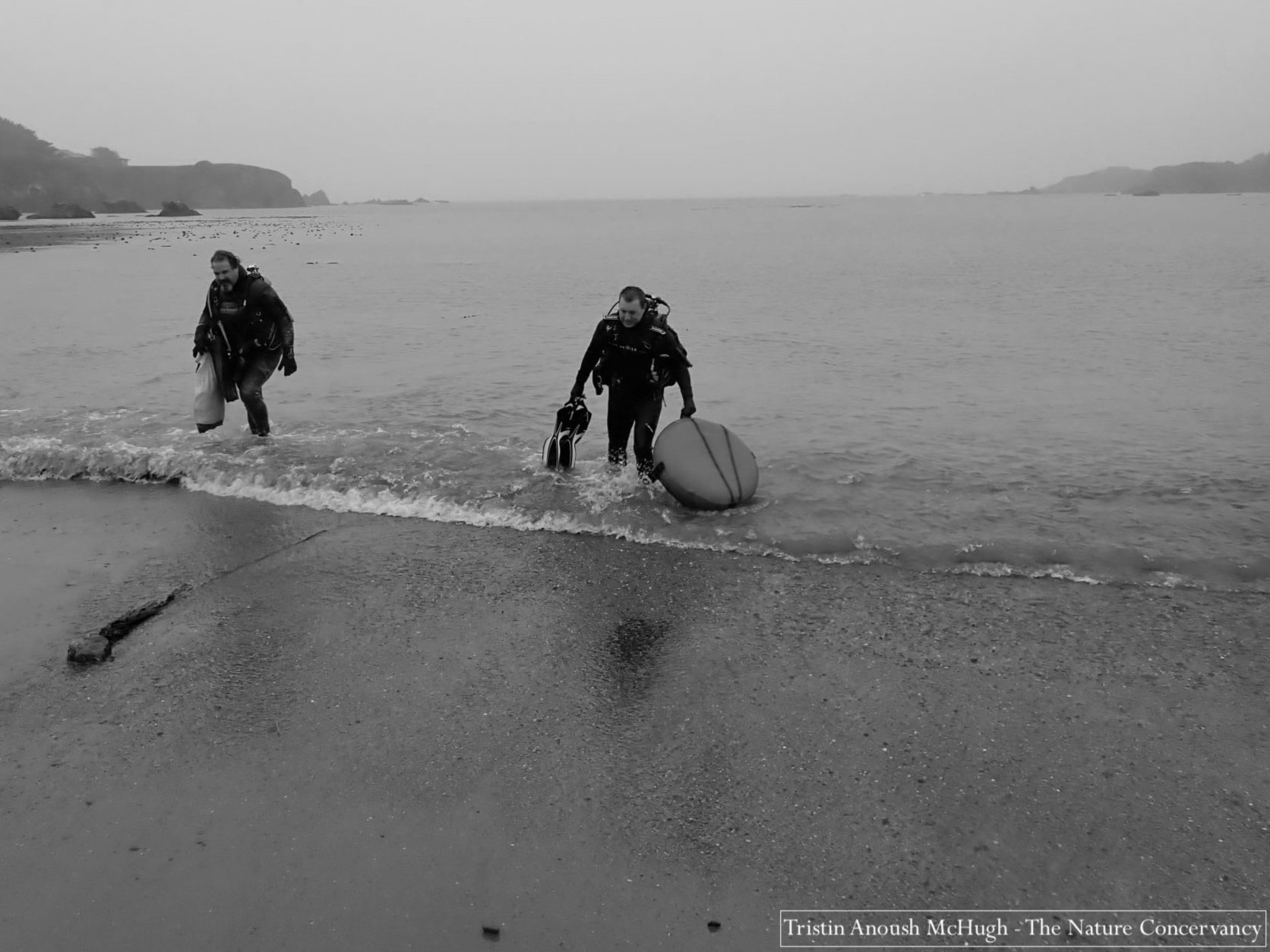
The Story Page
Here, we invite you to delve deeper into the journey of our mission to experimentally restore the marine ecosystem off the beautiful coast of Caspar Cove in Northern California. Join us on this exploration as we chronicle the journey of environmental stewardship, community engagement, and the collective pursuit of a healthier, more vibrant ocean.
The Story
In Northern California, a combination of events known as “multiple stressors” contributed to the decline of ocean health. Starting in 2013, a mysterious marine disease swept through the eastern pacific affecting > 90% of sea star species including a key urchin predator, the Sunflower star. Scientists estimate over 5 billion sunflower stars have died throughout the range and have yet to recover. Of importance, sunflower stars were the final remaining sea urchin predator in the region as otters were extirpated in mid-1800s to fur trade and have yet to recover.
Additionally, in 2014, a devastating ocean heatwave struck the Eastern Pacific, particularly affecting the Mendocino Area. This phenomenon, known as the "Blob," brought unusually warm waters to the region, triggering significant ecological impacts. The Blob was also followed by an El Nino Event from 2015-2016 further exacerbating ocean warming. Among the most affected were the underwater forests of bull kelp, essential marine habitats known for their biodiversity and ecological importance.
As temperatures soared, the bull kelp forests experienced unprecedented stress, leading to widespread die-offs and dramatic declines in kelp coverage. This decline created "sea urchin barrens," which are areas characterized by areas where dense populations of sea urchins and very little other biodiversity and productivity.
The repercussions of this ecological disturbance were profound. Bull kelp forests provide critical habitat and an environment that supports many hundreds of species, including fish, birds, mammals, urchin, abalone, other invertebrates and humans. With the loss of these habitats, local ecosystems faced disruptions, impacting species abundance, distribution, and overall biodiversity.
Furthermore, the collapse of bull kelp forests had cascading effects on coastal communities and economies. In under a decade, kelp forest canopy in Northern California (Sonoma and Mendocino counties) declined by over 96%, leading to recreational fishery closures (e.g. abalone) commercial fishery closures and federal disasters (e.g. kelp, sea urchin, salmon), legacy dive shop closures, and the loss of an ecosystem highly valued by a coastal community deeply rooted in kelp. The impacts of this rapid ecosystem shift underscores the connections between people and nature. However, despite the devastating impacts of kelp forest loss on this rural region of CA, the community is highly motivated to facilitate revival through coordinated, grassroots kelp forest restoration efforts that are holistic in approach and are experimental to ensure ethicacy of approach and data-driven decision making.
In December 2020, the California Fish and Game Commission (FGC) adopted an amendment that allows divers with a California sport fishing license to take unlimited purple sea urchin at Caspar Cove in Mendocino County. The goal of this amendment is to allow recreational divers to remove urchins to test the following research questions:
Can divers operating under the proposed sea urchin sport harvest regulations reduce sea urchin densities to levels expected to facilitate kelp regrowth?
Does reduction of sea urchin grazing pressure facilitate natural kelp regrowth?
Are there negative impacts associated with urchin culling (e.g. bycatch, damage to underlying reef structure, disturbance to marine mammal populations)?
Can recreational divers collect, analyze, and communicate data/results in a way that is both scientifically sound and informative to resource managers?
Our Story
In response to kelp ecosystem loss in Northern California, groups like the Watermen's Alliance, Reef Check, the Nature Conservancy, CA Department of Fish and Wildlife, the Ocean Protection Council, Humboldt State University, Blue Harmony, California Sea Grant, and other local organizations and stakeholders, have mobilized to work together and conduct the necessary work to evaluate possible pathways for human intervention in mitigating kelp loss.
The Caspar Cove Project (part of the Waterman's Alliance Sea Urchin Removal Event at Caspar Cove) was born out of a shared passion for ocean conservation among a group of dedicated water enthusiasts. Recognizing the urgent need to address the rapid and unprecedented loss of kelp forests, the community came together with a mission to take action.
On May 10, 2018, an emergency, temporary regulation change went into effect, which increased the daily recreational bag limit for purple sea urchins from 35 individuals to 20 gallons, taken only while skin diving or SCUBA diving in state waters off Mendocino and Sonoma.
Almost a year later on February 25, 2019, the Fish and Game Commission adopted a regular rule making change which increased the daily recreational bag limit of for purple sea urchins from 20 gallons to 40 gallons, taken only while skin or SCUBA diving off Humboldt, Mendocino and Sonoma state waters
The inaugural Caspar Cove Project community event took place in 2020, when a small group of volunteers, led by Joshua Russo from Watermen’s Alliance, gathered at Caspar Cove armed with diving gear, and determination. Guided by their commitment to restoring balance to marine ecosystems, they set out to remove excess sea urchins by “in-water culling” from the cove, one dive at a time.
Since then, the Caspar Cove Project has grown into a community-driven initiative, drawing participants from all walks of life who share a common goal: to protect and preserve our ocean's precious resources. Year after year, volunteers return to Caspar Cove, eager to make a difference and contribute to the ongoing conservation efforts.
Despite considerable challenges posed, there remains hope for the restoration and conservation of bull kelp forests and the diverse ecosystems they support. Through collaborative efforts and community engagement, we can work towards a healthier, more resilient marine environment for future generations.



